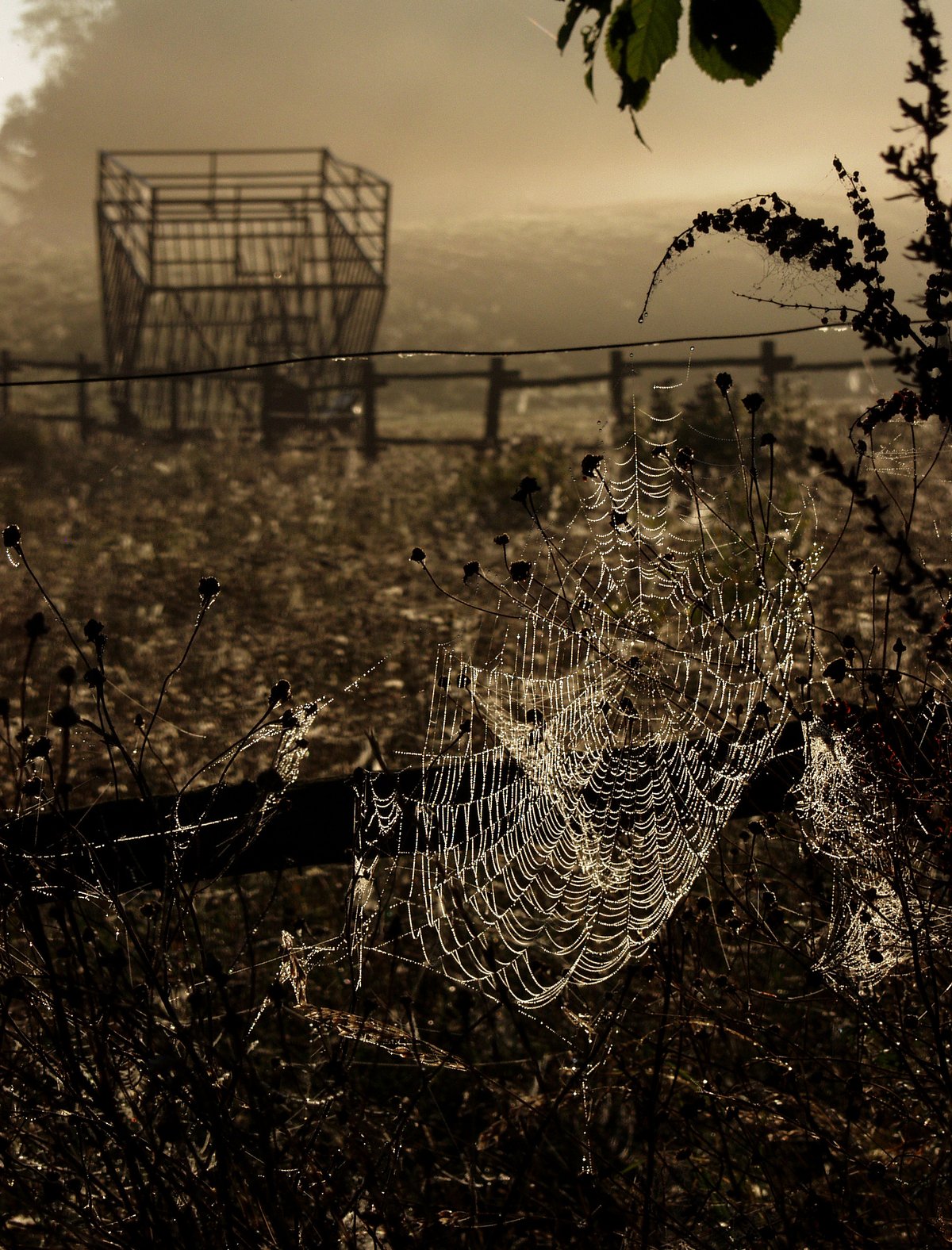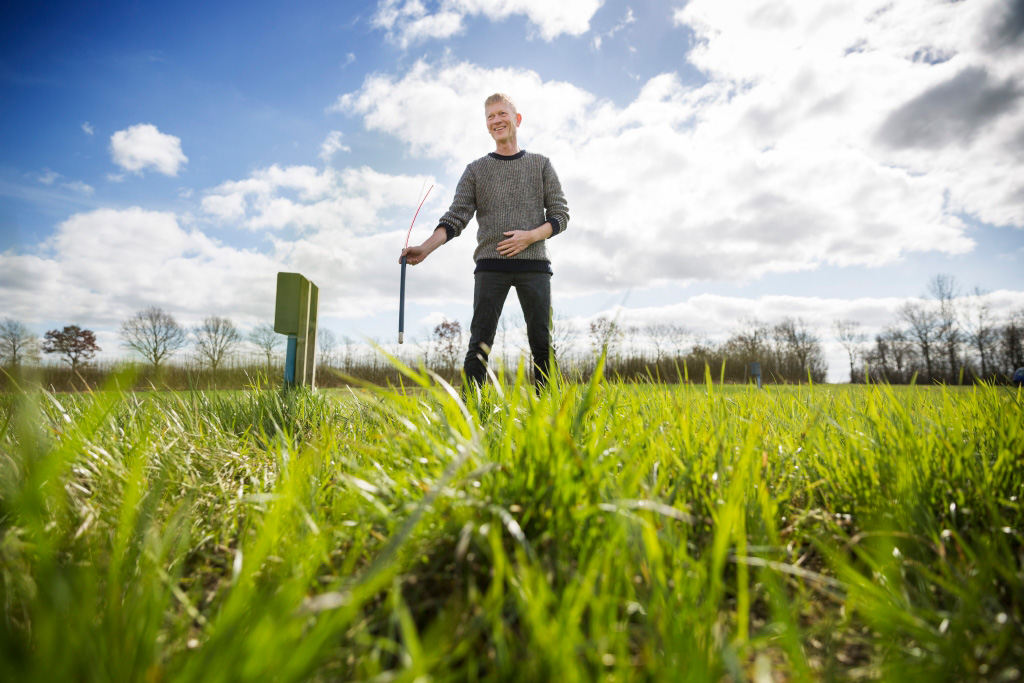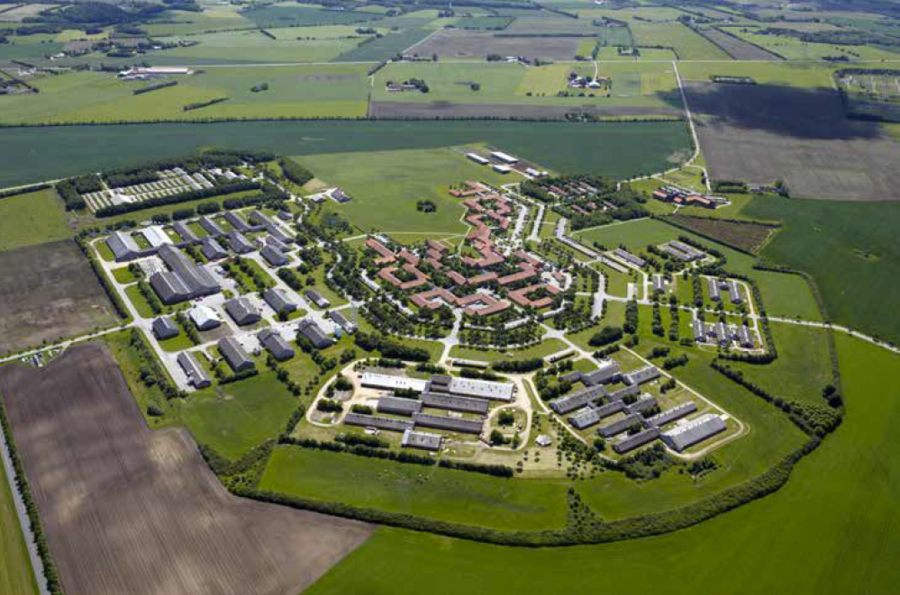
Eight kilometres east of Viborg rests the small village of Foulum. The AU Foulum Research Centre is located just south of the village. It is one large, cohesive laboratory ecosystem in which technology and engineering sciences merge with the latest livestock and agricultural research. The goal is a green revolution. And it's just around the corner.
AU Foulum houses a total of 120,000 square metres of laboratories used by researchers from the university's departments of Animal Science, Agroecology, and Biological and Chemical Engineering, as well as research groups from the Center for Quantitative Genetics and Genomics, and DCA, the Danish Centre for Food and Agriculture.
The focal point for engineering researchers is a green transition of society's current linear fossil economy to a completely new type of economy: A sustainable system based on the premise that we only have the world's biological resources on loan, and therefore they have to be part of a circular system with minimal depletion.
In short: a circular bioeconomy.
"Our entire society is currently chiefly based on fossil raw materials and energy sources. We aren’t just talking about energy for heating, electricity for light and fuel for transport; we’re also talking about how our entire industry and production focuses on predominantly fossil raw materials. If we are to make a difference in climate change and global pollution of nature and the environment, we have to rethink the entire infrastructure," says senior researcher Uffe Jørgensen, who is head of the Aarhus University Centre for Circular Bioeconomy, CBIO.

What Uffe is talking about basically comes down to what crops we grow on our fields.
For thousands of years, Danish farmers have refined the agricultural sector towards so-called yellow crops. These are annual crops such as corn and rapeseed, which are green in the spring, yellow in the summer and harvested in late summer so that the fields are brown in the autumn.
"Seen from a circular and resource-efficient perspective, this is absolutely ridiculous. We waste up to half of our growing season with no photosynthesis, and what’s worse is that these cultivation concepts exacerbate the sector's serious environmental problems, including nitrate leaching, pesticides and reduced carbon content in the soil. By using green, perennial crops, we can solve many of agriculture’s environmental challenges," says Uffe Jørgensen.
By allowing evergreen grass and clover to grow in fields, we can start designing an agricultural landscape based on a natural-sciences principle of the best use of resources. In a circular mindset and from a climate perspective, it is about having as long a growth season and as many green plants as possible. This creates photosynthesis, and it binds carbon from the atmosphere in the biomass.
“Photosynthesis is the only significant negative greenhouse gas emission we have, and it has a major impact on the carbon balance. That's why we have to get as much of it as possible. And from there we can begin to solve the climate challenge technologically. More green crops will be a revolution in agricultural production, because they are clearly the most optimal for the climate, the environment and nature, but up to now there has been no market for green crops other than as cattle fodder,” the senior researchers says.
The vast majority of the yellow crops grown today are used for animal feed, and only a little goes to other uses such as human consumption. Residues such as straw are used for feed, litter and fuel and biogas production.
The perspectives for green crops are somewhat different.
Firstly, green crops can produce far more biomass per hectare of farmland than yellow crops. They are also far more resilient and bind more carbon and nitrogen.
The green biomass can supply energy in biogas plants, and via biorefining can be converted into protein powders, chemicals, bioplastics, building materials, green fuels, clothing textiles, pharmaceutical products and much more.
Professor Lars DM Ottosen
Coupled with further bio- and chemical engineering processes, such as electrolysis, we get into the whole area of Power-to-X and the electrification of society. This means that green biomass from agriculture could be a major player in a wide range of industries that today are based almost exclusively on fossil raw materials.
"The biodiversity crisis, pollution of nature and the environment and the climate crisis are massive issues that can be solved by the same approach, i.e. far better and more efficient production of biomass and a multitude of technologies that can convert biomass into the products that society is looking for now and in the future. It entails a total and complete reorganisation of the way we produce food, and it has far-reaching consequences for carbon-based manufacturing industries," says Professor Lars DM Ottosen, head of the Department of Biological and Chemical Engineering.
He continues:
"We've come to a point when we have to rethink everything. Right now agriculture has a chance to take the lead and become the driving force behind the entire green transition. Clearly, this requires a great deal of development, primarily relating to the total reorganisation of our food production, but if we do so the possibilities are colossal."
Lars DM Ottosen believes that the main difference in the agriculture of the future will be far less livestock. Instead, meat and other animal products will be replaced by cell-based technologies.
"Generally, nothing can measure up to a cell-based approach to food production. The technology doesn’t pollute, and there are no losses. We can produce the same amount of food with far less than half of the feed input demanded by livestock, and coupled with green crops, this will mean that you can produce far more food on much less farmland. This opens up for more nature in many of the areas that are currently used for agriculture, and with far more environmentally friendly biomass production, we’ll have good opportunities to improve biodiversity," he says.

Research at Foulum has already come a long way. The first farm site for biorefining grass was taken into use in 2020 by Kristian Lundgaard-Karlshøj, a farmer at Ausumgaard near Struer, and more and more farmers are looking at the possibilities in a new Danish export enterprise that literally is green.
"We have some important goals to reach by 2030 and even bigger goals for 2050, and we will have to work with companies and enterprising farmers to reach these. The possibilities at Foulum are unique, and the collaboration between engineering science, agroecology and animal research opens up for many exciting new areas to take us even further with these technologies. An exciting future lays ahead for Danish agriculture," says Senior Researcher Uffe Jørgensen.